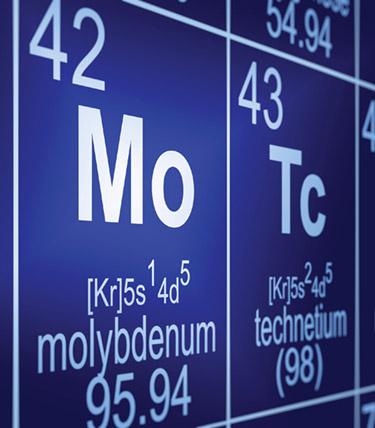The Bryn Mawr Factor
Now at Princeton, a chemist is pursuing hard research with real-world applications.
When Doug Gisewhite, Ph.D. ’17, arrived on campus, Chemistry Professor Sharon Burgmayer took notice. Burgmayer specializes in bioinorganic chemistry, and she was looking for someone with expertise in organic chemistry to help with her research on the molybdenum cofactor (aka Moco), an enzyme critical to human health. In Gisewhite, she found her man.
Burgmayer’s work with molybdenum focuses on atomic-level reactions, particularly in the case of pterin, an aromatic heterocycle that is bound to the metal center of Moco via a dithiolene.
As Gisewhite explains, “We were doing a lot of modeling work, specifically trying to understand the pterin’s contributions and how it did or didn’t control what was going on at the molybdenum metal center—because that’s where all the action is.”
Fast forward and you’ll find Gisewhite in the Princeton chemistry lab of Professor John T. Groves, who works at the interface of organic, inorganic, and biological chemistry. In 1976, he coined the term “oxygen rebound” to describe the mechanism by which
iron-containing enzymes called oxygenases introduce a hydroxyl group (one that contains oxygen bonded to hydrogen) into substrates.
“His focus is on heme proteins and carbon-hydrogen bond activation,” Gisewhite explains. “That is, replacing hydrogen with another functional group, maybe hydroxyl or azide or chlorine. And I want to learn more about that kind of organic work.”
More recently, Groves’s lab has upped the game and experimented with the transfer of more interesting functional groups like 18F, fluorine, chlorine, bromine, azide, and isocyanate.
If that sounds like nothing but pure research to you, think again. The answers to the questions Gisewhite is studying have real-world applications. As Gisewhite explains, “For example, 18F—a fluorine radioisotope—has interesting implications for PET imaging.” (Positron emission tomography, or PET, is a nuclear imaging technology used to observe metabolic processes in the body.)
The Princeton lab’s work shows potential for other medical applications. “Bromine and chlorine are useful in coupling reactions,” says Gisewhite, “and azide and isocyanate are building blocks in synthetic organic chemistry, especially medicinal chemistry.”
The work can be challenging though. “With a manganese porphyrin catalyst, we can insert functional groups at late stages of synthetic development,” he says. “But that’s not very easy—as I’ve been finding out with the number of failures I’ve observed in my last three months.”
But Gisewhite is philosophical about setbacks: “In chemistry, as in life, you observe failure, but you never let it get you down. You persevere and try something else. You observe another failure, and you try again—our greatest successes come after our greatest disappointments. These failures should be considered guidelines, not stop signs.”
Published on: 05/15/2018

